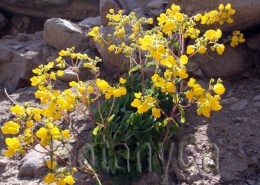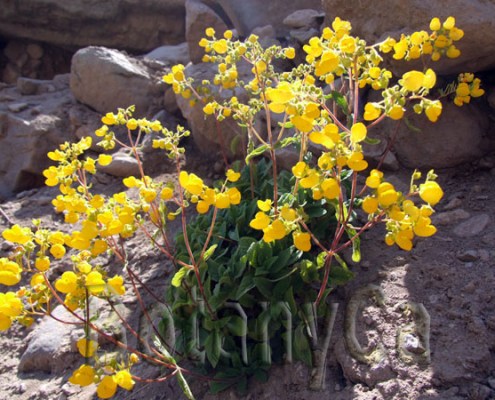A group of plants that I really like and hope to increase my collection, are the columbines: Aquilegia spp., and in particular, of course, the alpine columbines. In contrast with the more regular garden Aquilegia varieties, the alpine ones are short in stature but bearing large flowers. In most cases they have a delightful bluish, compact foliage, which in itself makes a wonderful addition to any small rock garden.
All Aquilegia are important food source plants for bees, bumblebees, hummingbirds and hawk moths. Even just for this reason one should include them in the garden. Interesting fact, biologists found that the length of the nectar spurs in Aquilegia evolved to allow flowers to match the tongue lengths of their pollinators. Species with very long nectar spurs, like A. coerulea are pollinated by hummingbirds and hawk moths, while the short spured species, like A. canadensis are fancied by bees and other short tongue insects.
Aquilegia coerulea (Colorado blue columbine) has flowers with very long nectar spurs that look like space ships or sea creatures, wherever your imagination tends to go, up to the sky or down in the ocean. Very variable in height, anywhere from 15 to 90 cm and in flower colours – from white to pale or dark blue; also there are reports of a variety with spurless flowers!
I am greedy when it comes to columbines. This spring I am looking forward to see flowering (and take more pictures) in my rockery a few alpine columbines I grew from seeds: A. jonesii – the smallest of columbines, A. saximontana and A. discolor (that is if my seedlings survive the record low temperatures we have this winter).
Also ready to greet the pollinators this year: A. nigricans (Carpathians Mts. collection), A. alpina and A. atrata.
I would note that most Aquilegia species are polymorphic and difficult to define adequately. Some of the variability is because of introgressive hybridization (Flora of NA). Even distantly related species of columbines are often freely inter-fertile, hence the multitude of hybrids and cultivated forms available. Also, this poses a problem for seeds collection, especially in the case of cultivated varieties if one requires true to type species.































































































































































































































































































































































































































